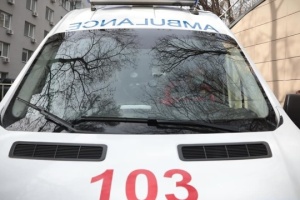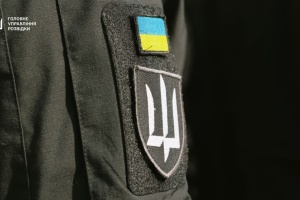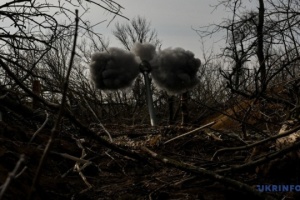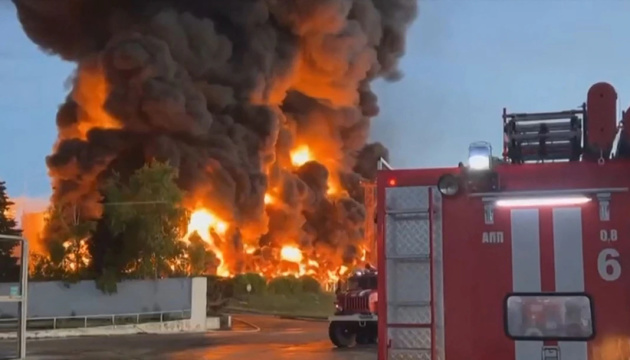
Drone strike exchange: new phase of war in which Ukraine looks good
On the territories temporarily occupied by Russia, and, in fact, in Russia itself, numerous "explosive incidents" occur almost every day: Sevastopol, Simferopol, Kerch, Bakhchisaray, Feodosia, Yevpatoria, Novoshakhtynsk, Novorossiysk, Tula, Saratov, Belgorod, Bryansk, Ryazan, Kursk, Voronezh, Yeysk, Rostov-on-Don, Pskov, Moscow... Over the past month, at least 30 enemy targets have been attacked by drones. And this is only what is known. In fact, not everything is reported, and therefore the scale is much larger. Of course, the aggressor is trying to respond. For example, on the night of May 8, Russia launched as many as 35 Shahed-136/131 at Kyiv. All of them were successfully destroyed by the Air Force.
What does this mean?
It shows that a new phase of the war is unfolding before our eyes, let's call it "exchange of strikes on opposite courses": now they are not only hitting us, but we are hitting them. Of course, the military and political leadership of Ukraine does not officially confirm that the abundant flowering of "cotton" is the work of the Armed Forces of Ukraine. But, importantly, it does not refute this fact in any way.
So where do we stand, who currently has the most reliable resource for drone warfare? What types and nomenclature of UAVs do we and the enemy use? Where have the Bayraktars gone and how serious is the risk of establishing production of Shaheds in Russia and Belarus?
CURRENTLY THERE ARE MORE ENEMY DRONES IN THE AIR, BUT WE ARE GRADUALLY IMPROVING THE SITUATION
Oleksandr Kovalenko, a military and political observer at the Information Resistance group, says that until 2022, the aggressor's UAV production capabilities were much better than Ukraine's.
"Russia had well-established lines for the production of various types of drones, primarily reconnaissance drones. In addition, there were a number of programs for strike drones. The sanctions imposed at that time still allowed Russia to receive a significant amount of Western-style technology," he says. "At the same time, Ukraine was limited in the production of UAVs until 2022. While Russia was well-funded, with significant budgetary allocations, in particular, as part of its army modernization program, we were not."
So Russia managed to "slander" a certain amount. But after 02/24/22, everything began to change…
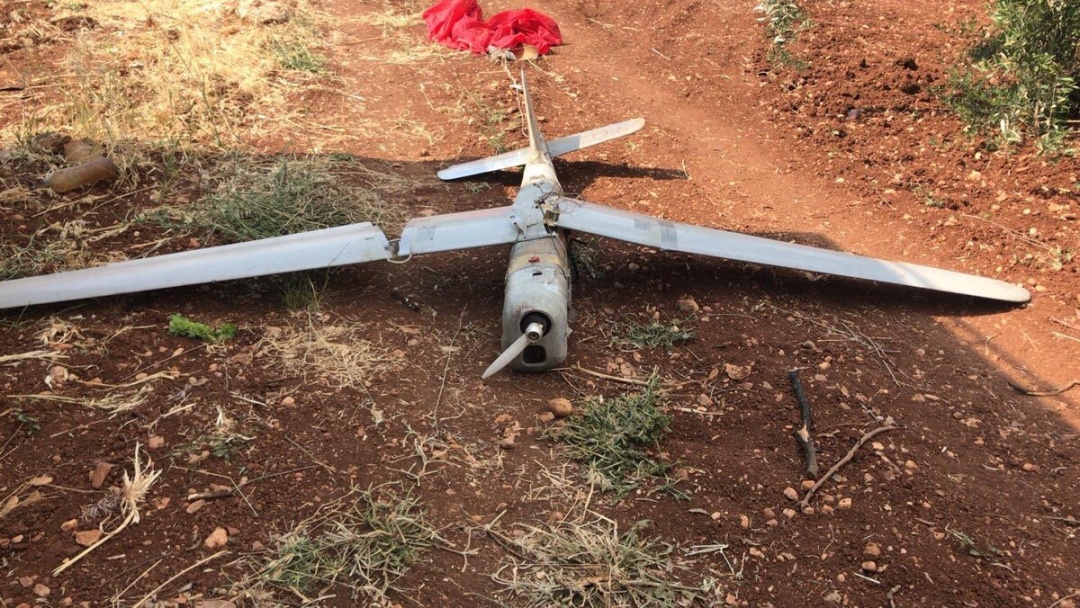
"Sanctions against Russia have been getting tougher every time. And given that almost all of their UAV production depends on foreign components, Russia is facing serious problems. For example, the same Orlan-10 has about 80-90% of components of Western origin [this drone is equipped with parts from at least 5 countries, including the engine.] Other reconnaissance vehicles, such as Forpost, Garnat, and Eleron, have a similar situation. This is the first point. The second is that most of the UAVs that Russia managed to produce by 2022 actually proved to be ineffective in real combat and were simply destroyed."
According to the official data of the Armed Forces of Ukraine, as of May, more than 2,500 enemy drones have already been "shot down". According to unofficial figures, the number is much higher.
Realizing that they cannot compensate for the losses with their own capacities, the military leadership of the aggressor state decided to follow the same path as we did, that is, to purchase civilian drones, in particular Chinese ones, such as Mavic, and then turn them into attack drones [such drones can be equipped with a system for dropping grenades and mines.]
"The production of reconnaissance UAVs has almost come to a standstill. I'm not even talking about strike drones. With the exception of Lancets, which Russia can still mass-produce," Mr. Kovalenko said.
Artem Viunnyk, director of the Ukrainian private enterprise Athlon Avia, is confident that if the world had decent control over sanctions, it would be possible to minimize the production of UAVs in Russia altogether: "Even components that are not military or dual-use are produced by a very limited number of companies in the world. If, for example, we block the supply of internal combustion engines (ICEs), which are used in Orlan-10 drones, Russia will not be able to offer an analog of such a system very soon, and even if it does, I am sure that the first such samples will crash very often."
He also emphasized that it takes a long time to find a replacement for an engine that has been tested and worked on for years, especially when it comes to an internal combustion engine.
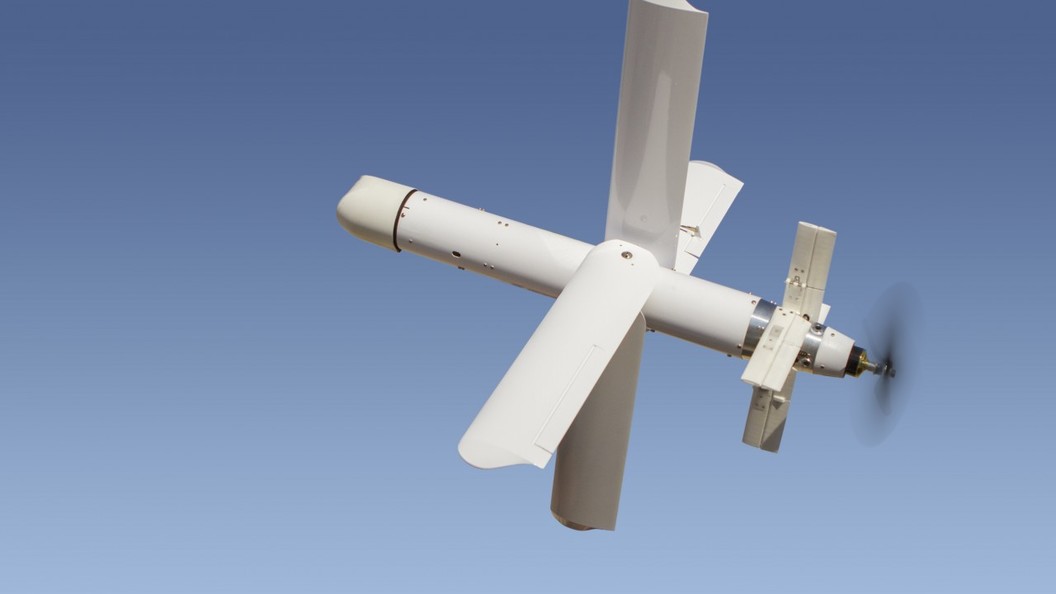
Military expert Mykhailo Samus says that despite the fact that Russia does have problems, this does not mean that supplies do not go through third countries, including finished products. Iran, for example, regularly supplies the aggressor with its kamikaze drones.
"If it is impossible to manufacture drones, it is no problem to buy them. For example, Russia is now actively developing partnerships with Iran, in particular, helping it to develop its nuclear program," Mr. Samus points out.
So is everything really that bad? In fact, no.
"Although there are more Russian UAVs in the air than ours, we are slowly improving the situation. It's a pity that only in February 2022 did society agree that something should be done," says Vadym, head of the Aerorozvidka NGO.
And the international community did not leave Ukraine alone with the aggressor. Our Ramstein partners are trying to provide our country with everything it needs to win. Including various drones. For example, the United States alone provides us with reconnaissance ScanEagle, RQ-11B Raven, RQ-20 Puma, barrage munitions Switchblade 300, Switchblade 600, Phoenix Ghost, etc. as part of military assistance.
And what does Ukraine itself do, how does it provide for itself?
First of all, we should mention the "Army of Drones" [a comprehensive program that includes systematic procurement of drones and training courses for relevant specialists.], launched by the General Staff of the Armed Forces of Ukraine and the Ministry of Digital Transformation on the UNITED24 platform. From what is known, as of May, the platform has already raised $325 million [or UAH 12 billion 350 million]. In particular, more than 3,800 drones were contracted [the nomenclature is not disclosed, it is only known that a significant part of the drones are Ukrainian-made] for more than UAH 4.1 billion and 10,000 operators were trained.
"Today, there are more than 20 schools in Ukraine where people can learn to fly drones. As for the UAVs themselves... There will be many more changes to come so that Ukraine can produce thousands of drones every month, which the Defense Forces need right now," said Mykhailo Fedorov, Minister of Digital Transformation.
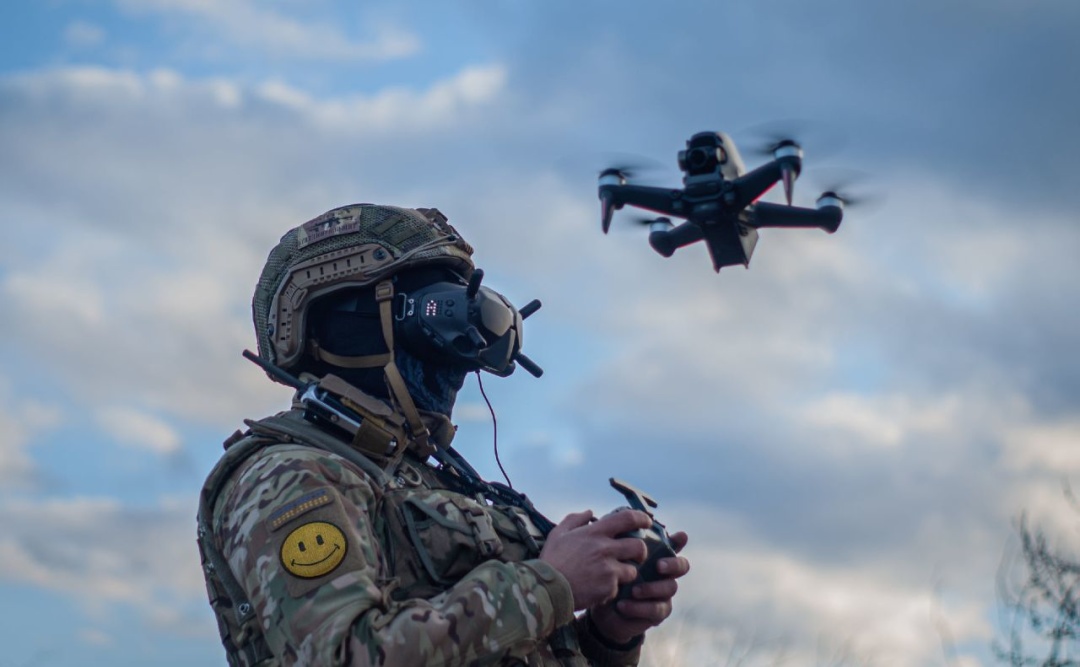
He also recalled the creation of strike companies: "In March, three separate companies of attack UAVs were created within the Armed Forces of Ukraine. Another eight such companies have been manned just recently. These are the first troops in the world to be deployed by Ukraine, and they will enhance the infantry's firepower and reconnaissance capabilities."
Separately, the needs of the Armed Forces of Ukraine are also met through volunteer procurement [a similar movement is hardly developed in Russia.] and large foundations and companies. For example, the same Serhiy Prytula Foundation purchases hundreds of commercial drones for the army, mainly Mavic 3 (China), Autel EVO (USA) and PD-1 (Ukraine).
OUR BIRDS: WHAT DRONES DOES UKRAINE PRODUCE AND USE AT THE FRONT?
UAVs can be divided into four classes. All of them are used by the Ukrainian military during this war.
The first class is "micro". It includes drones used in civilian life. The main models available in Ukraine and actively used at the front are the Chinese DJI and American Autel UAVs. The main advantages of these devices are their compactness, low price, and ease of use. Even a person who has never flown a drone before can learn how to operate it in a matter of hours. The disadvantages are the limited range and short battery life. Such devices can stay in the air for about 30 minutes.
The second class includes medium-sized drones used at the tactical level and performing reconnaissance functions. This includes the Ukrainian Leleka-100 and Furia UAVs. These drones have a significant advantage over the "micro" class due to the fact that they are designed for military purposes and can stay in the air for about 3 hours.
The third class is operational and tactical drones, which can operate in the sky for up to 10 hours and have an extended range, allowing them to work in reconnaissance. This type of UAVs includes the Ukrainian-made PD-2 and Raybird-3 multi-purpose drones.
The fourth class is strategic UAVs, or combat (strike) UAVs. These include, for example, the Turkish Bayraktar TB-2 combat drone. It can stay in the air for up to 24 hours, conduct reconnaissance, and carry guided bombs.
We've got the types of UAVs figured out, but now what about the ones produced by Ukraine?
The list is very long, so we have selected the projects that have already been certified and put into mass production.
Furia
"Furias have been manufactured by Athlon Avia since 2014. According to the company, they had delivered about 100 systems to the Armed Forces of Ukraine, the National Guard and the Security Service of Ukraine before the war started.
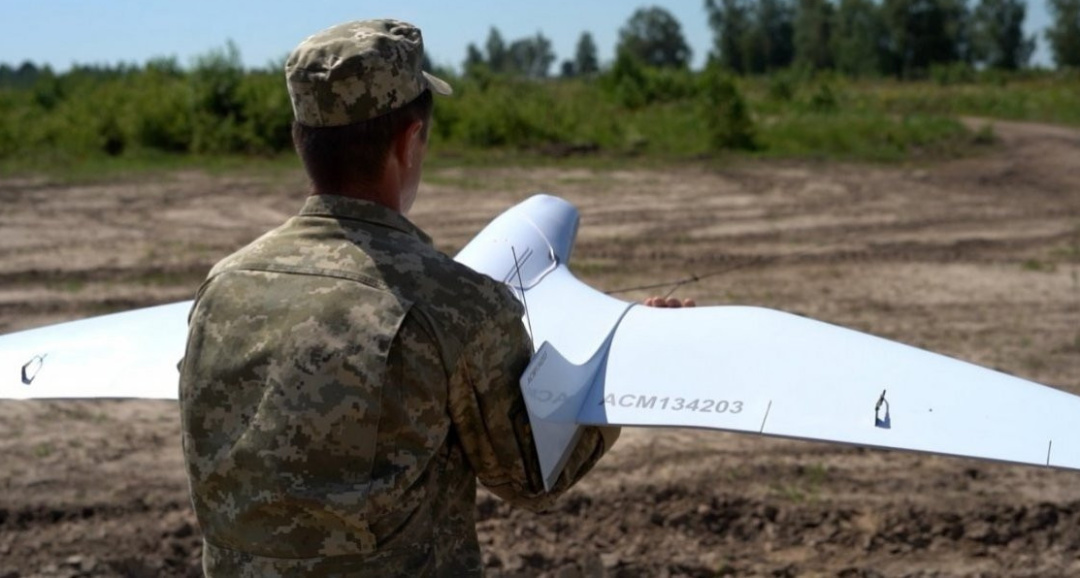
"Furia is capable of operating within a radius of 50 kilometers and staying in the air for up to 3 hours, which is a fairly high performance for a tactical-level drone.
The price of the Furia complex depends on the configuration, with the minimum price of $60 thousand and the most extensive - about $160 thousand.
Raybird-3
This drone was created by Ukrainian company, Skyeton, and what is known about it is impressive.
The Raybird-3 can climb to an altitude of 4,500 km and fly into the Russian rear at a distance of 1,200 km, with a maximum range of 2,500 km in autonomous mode and a speed of 140 km/h. The drone is not afraid of electronic warfare (EW), because in the area of their action, the device switches from GPS to an inertial navigation system, and the digital data transmission channel is reliably protected from hacking and control interception. It is known that Raybird-3 flies along a pre-programmed route and returns to the base. The device transmits video from the camera at a distance of up to 120 km.
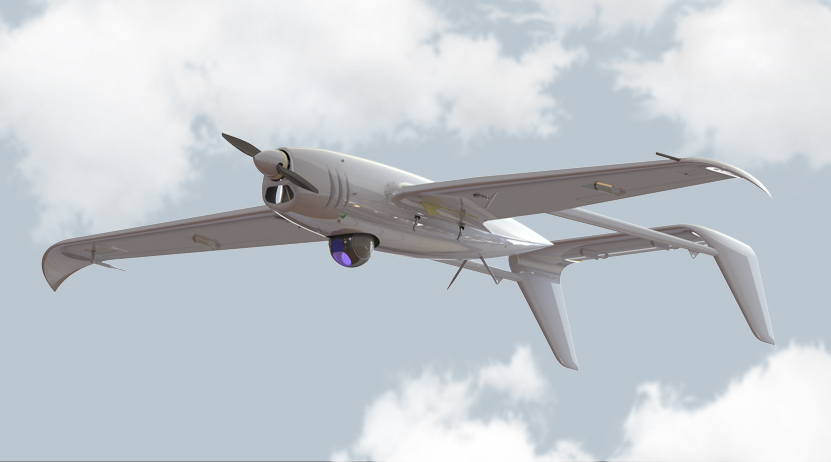
Raybird-3 performed well during the Armed Forces of Ukraine counteroffensive in Kharkiv region. The Russians tried to shoot it down near Balakliia using Buk missile systems, but the drone evaded, tracked down the complex and the ammunition depot, and then transmitted their coordinates to the artillery.
This drone is now operating in the Bakhmut sector.
PD-2
PD-2 is a multi-purpose drone for aerial reconnaissance and combat use. Kyiv-based UkrSpecSystems has been manufacturing it for the Armed Forces of Ukraine since 2020.
The ground control station can simultaneously control two UAVs. The drones are equipped with an optical station with a gyro-stabilized platform, a gimbal with several cameras and a thermal imager, which allows them to observe at an altitude of up to several thousand meters at any time of the day.
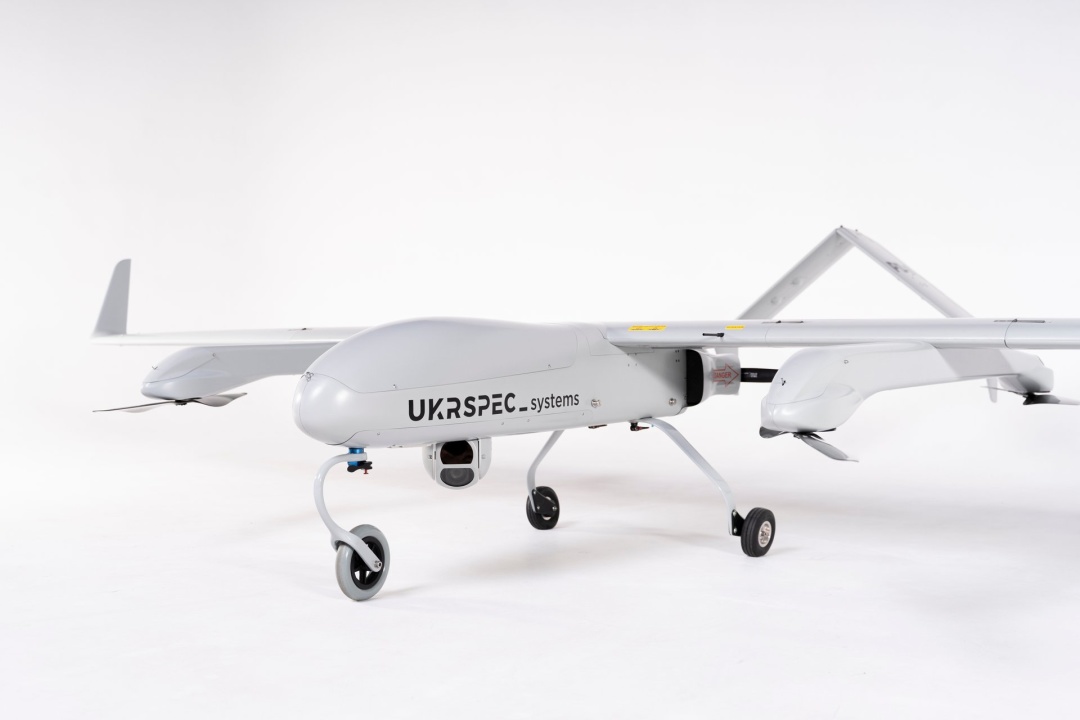
Main characteristics depending on the modification:
- Flight time - from 8 to 10+ hours;
- Maximum altitude - up to 5,000 meters;
- Maximum payload - up to 19 kg;
- Maximum speed - up to 140 km/h;
- Range - up to 1,000 km.
Leleka 100
"The Leleka 100 is one of the most mass-produced domestic drones. The Dnipro-based manufacturer DeViRo handed over more than 300 of these "birds" to the military before the war.
The complex is designed for aerial reconnaissance and determining the exact geographical coordinates of objects in real time in a complex electronic environment.
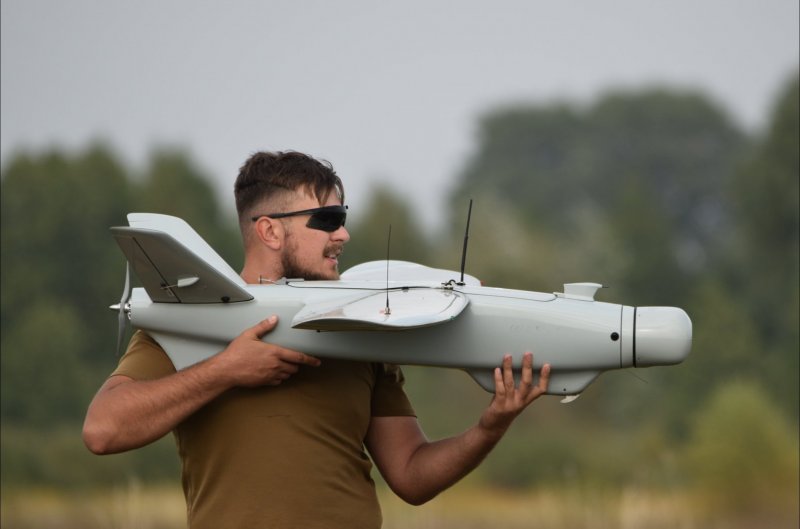
"This UAV is one of the most mass-produced in the tactical level class in the Armed Forces of Ukraine," says Yaroslav Honchar, co-founder of the Ukrainian NGO Aerorozvidka.
The drone is capable of reaching speeds of up to 120 km/h and adjusting fire at enemy targets to a depth of 50 km. The maximum flight altitude is 1500 meters, and the guaranteed route length is 100 km. It can stay in the air for 2-2.5 hours.
RAM II UAV
These are kamikaze drones, also manufactured by DeViRo. It was on them that Ukrainians raised UAH 352 million in one day after Russia's massive missile attack on Ukraine on October 10.
The RAM II UAV is a barrage munition developed on the basis of the Leleka-100 reconnaissance UAV. The flight radius is up to 30 km, flight time is up to an hour, cruising speed is 70 km/h, and the maximum altitude is 1000 meters. The weight of the drone is 8 kg, including the weight of the warhead - 3 kg.
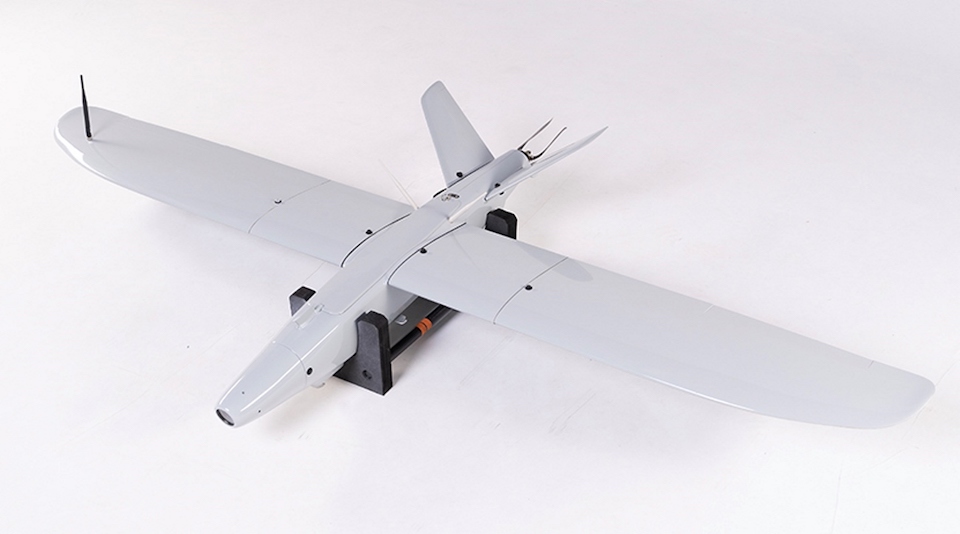
It is equipped with thermobaric, armor-piercing and high-explosive munitions. The RAM II UAV is launched from a catapult from the ground or a pickup truck, with a deployment time of 10 minutes. It is used to destroy air defense systems, armored vehicles, and enemy manpower concentrations.
The drone can also perform a reconnaissance function as it is equipped with a 10x zoom camera.
Punisher
This drone was developed by Ukrainian engineers, veterans of the Donbas war, who united to form UA Dynamics.
The Punisher is a reusable strike drone for conducting precision air strikes behind enemy lines. Priority targets for the drone include command posts, electronic warfare facilities, air defense facilities, ammunition and fuel depots, and mechanized infantry.
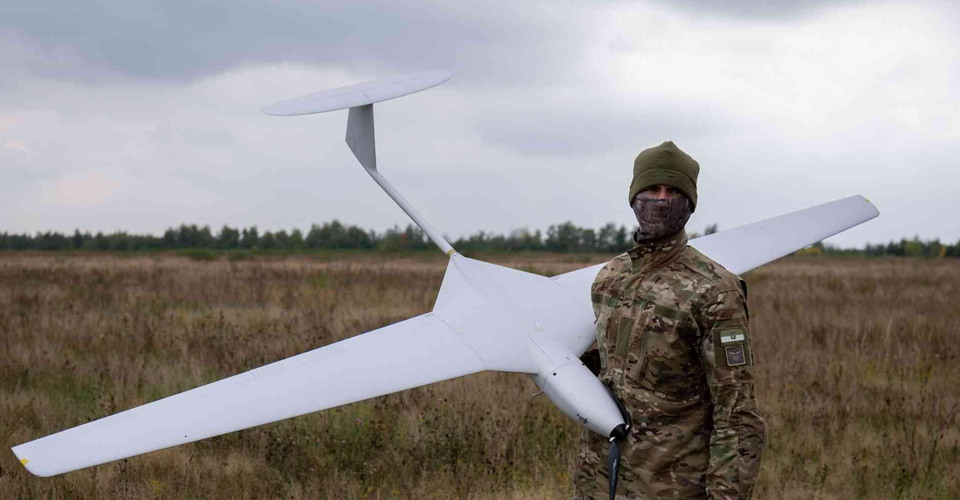
The flight range is 45 km, the speed is 190 km/h, and the altitude is 100-400 meters. The drone is powered by an almost silent electric motor that leaves no heat trace.
The Punisher is reported to deliver high-precision strikes with live ammunition deep behind enemy lines. The drone hits a target measuring 4 by 2 meters from a height of hundreds of meters and at a speed of more than 100 km/h.
The cost of the complex is $70,000.
Other interesting projects:
Sirko reconnaissance UAV
Created by Skyassist, a startup founded in March 2022. Serial production of this UAV has already been launched. It is planned to produce 2000 units by the end of the summer.
Sirko specifications:
- Wingspan - 0.9 m.
- Weight - 1.5 kg.
- Operating altitude - 200-300 meters.
- Flight duration: 50-70 minutes.
- The route length is up to 100 km.
- Video communication with the operator - up to 30 km.
-
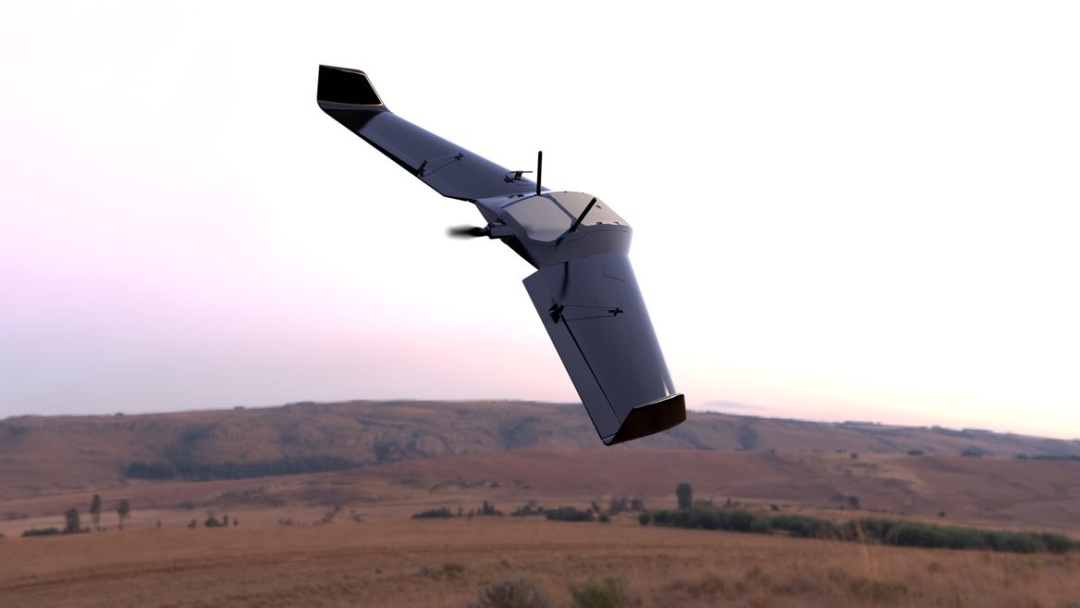
The Skyassist team says it has already successfully tested UAVs under the influence of EW, but refused to publicly announce the results.
Skyassist is currently developing four more products:
- Potai, a device for invisible communication;
- Bdzhola, a micro-UAV for special missions;
- UAV interceptor Faino;
- an attack drone.
"Hor"
This is also a reconnaissance UAV created by the Ukrainian startup Airlogix specifically for the ground forces. It is designed to reconnoiter and adjust artillery at altitudes up to 3500 meters. 28 systems have already been delivered to the Armed Forces of Ukraine.
There are few details about this drone, only that its range is 40 km. According to the startup's founder, Vitaliy Kolesnichenko, this distance allows it to detect almost all enemy artillery, electronic intelligence, electronic warfare, and electronic warfare equipment.
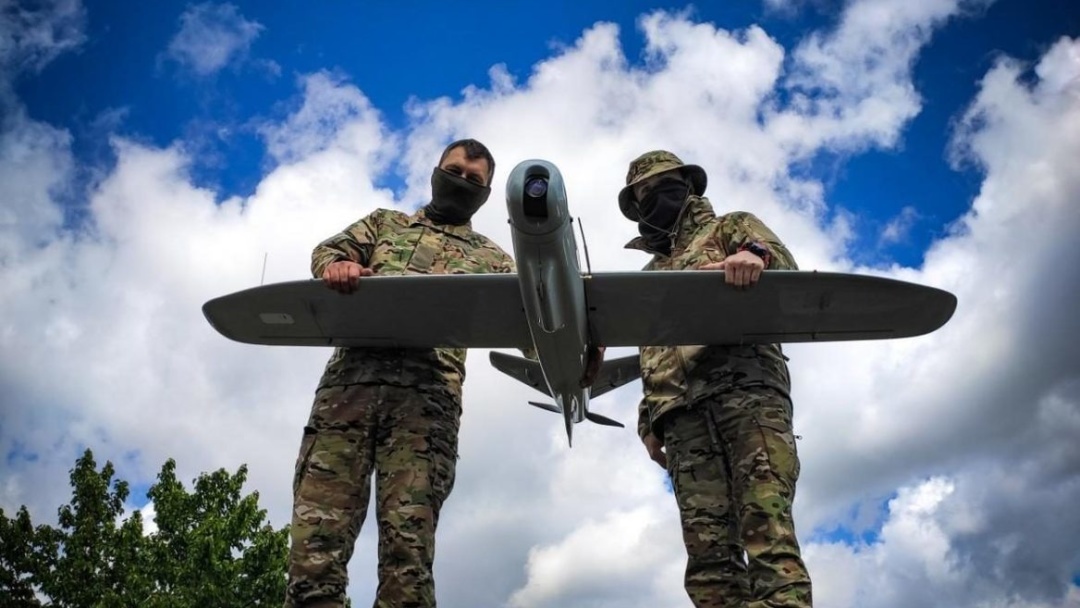
...It is also worth adding to the list a joint project of volunteers and the Armed Forces, which opened a drone factory in Odesa. They assemble 5000 (!) UAVs of various types in a month.
The first type is a kamikaze drone, capable of "working" on enemy targets - manpower and equipment - at a distance of up to 8 kilometers, even in conditions of electronic warfare.
The second type is a bomber drone. It has a range of 15 kilometers, a camera with a 10x zoom, and is armed with high-explosive and fragmentation grenades. The UAV carries a weight of up to three kilograms. It can drop six munitions simultaneously, or it can drop them pointwise along a pre-planned trajectory.
The third type is a small reconnaissance drone. Everything is clear here.
WHERE DID THE "BAYRAKTAR" DISAPPEAR TO AND WHERE ARE OUR "SHAHED"-LIKE STRIKE VEHICLES?
Turkish Bayraktar drones have become perhaps the most famous drones of this type in the world, in particular, they proved to be excellent during the Second Karabakh War of 2020, successfully destroying Armenian tanks and armored vehicles. According to the Ministry of Defense, starting on February 24, the Armed Forces of Ukraine received about 50 Bayraktar TB2s, which have repeatedly participated in the filming of the multi-episode "explosive" series called Chernobayivka. Recently, however, Bayraktar has somehow disappeared from the radar of the Ukrainian information field. What is the reason for this?
Oleksandr Kovalenko attributes this to the fact that the General Staff simply does not want to "shine" the coordinates where these drones operate.
"There is really not much information about the work of Bayraktars, but these UAVs are doing their job at the front, they have not disappeared," the military expert says.
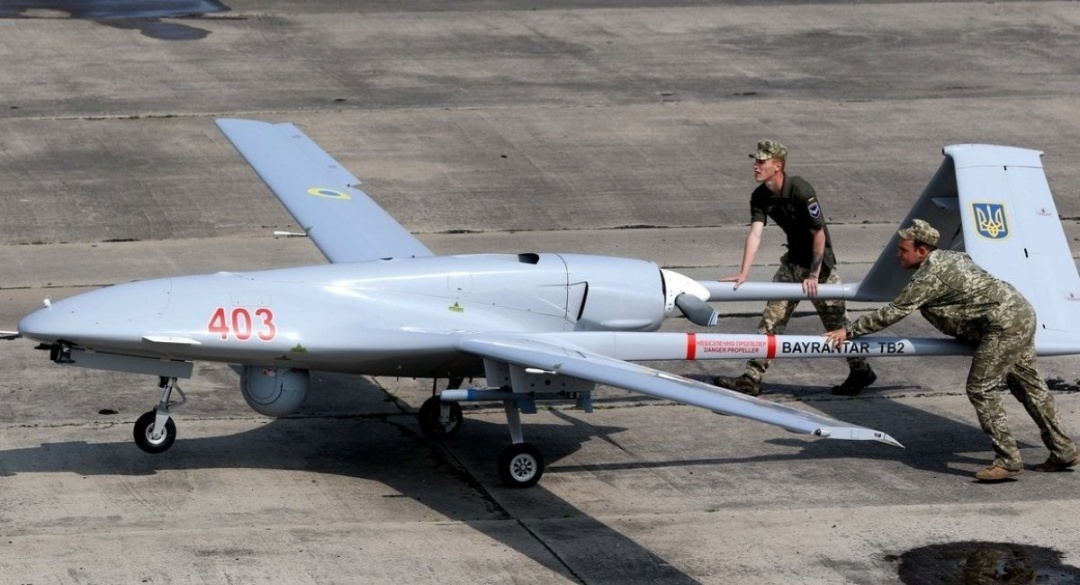
Unfortunately, Russia has more powerful air defense systems than Armenia. And with Russia's echeloned air defense, using Bayraktar TB2 as an attack drone has become simply unprofitable. There are many chances that it will be shot down. And one Bayraktar TB2 costs about $9 million.
"That's why," explains Oleksandr Kovalenko, "Turkish drones are now used more as reconnaissance drones. Given the quality of the equipment installed on them, they are very effective. And they fly outside the range of Russian air defense systems."
So, the Bayraktars are in service. And what is known about the Ukrainian counterparts to the Shaheds - where are they? Our engineers are certainly no stupider than Iran's to make drones of this type. After all, since October, our anti-aircraft gunners have already shot down so many of them that there should be enough "experimental" material. This is, first.
And secondly, where did the Russians get these UAVs, which seem to be endless. Perhaps the aggressor has already established their production? Finally, how should we treat reports that Tehran is discussing with Minsk the prospects of assembling these kamikaze drones in Belarus?
According to Oleksandr Kovalenko, on average, Iran now produces about 100 units of these drones every month: 50 Shahed-136 and 50 Shahed-131. As for the establishment of production in other countries, such as Russia and Belarus, he says, there is no confirmation of this information. However, the expert still does not rule out the development of such a scenario in the future. In the same Tajikistan, the production of other Iranian UAVs - Ababil 2 - has been launched.
"Ababil 2 is not a strike drone, but a reconnaissance drone. Nevertheless, the facilities have been deployed. Whether Tajikistan can also produce Shahids is a question. However, as an option, Iran could set up an additional production line for these drones at home," Mr. Kovalenko believes.
This would be very beneficial for Russia. After all, these drones are much cheaper compared to missiles, which the aggressor has few stocks of, if compared to missiles.
"Launching, for example, one X-101, or X-55, or Kalibr missile, the enemy spends from 7 to almost 13 million dollars. And 10 "Shaheds" cost 300,000 dollars. That is, in fact, 30 Shaheds is $1 million. And 210 Shaheds is a full-fledged cruise missile. Of course, the effectiveness of these drones is low; we have learned to shoot them down. However, we have learned to shoot down Russian cruise missiles in the same way. On the night of May 8-9, our air defense intercepted 23 out of 25 missiles."
The enemy command, according to the analyst, is now choosing a cheaper alternative to terror, saying that something will hit the target.
"That is why Shahed-136/131 is still a dangerous and rather serious threat," emphasized Kovalenko.
When asked where our counterpart to Iranian kamikaze drones is, the expert mentioned a secret development of Ukroboronprom - a strike UAV capable of attacking targets at a distance of up to 1000 km.
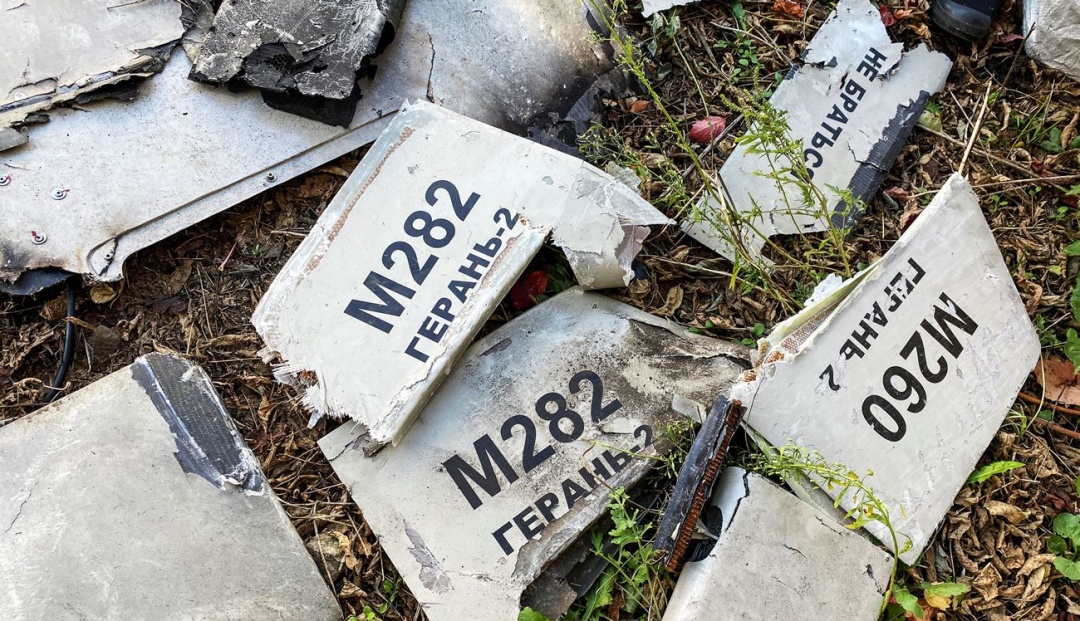
"This 'bird' is currently being tested," the expert said.
Almost nothing is known about this drone. The latest statement by Oleg Boldyrev, the concern's project manager, was as follows: "Our UAV is similar to the Iranian Shahed, but unlike it, it is capable of attacking targets several times. It already exists. We, Ukrainians, are greedy people. We will have "kamikazes" with the possibility of return."
Continuing the topic, Oleksandr Kovalenko noted that the kamikaze drone should be able to bypass enemy air defense. And it is inefficient to launch an untested drone.
"Today, it is more profitable for Ukraine to use other UAVs. They do not have to have a powerful warhead, the main thing is that they have a sufficient flight range. Our task is to deplete the enemy's air defense as much as possible," he emphasizes.
And when the overall Russian air defense system is weakened, the use of such kamikaze drones will become more appropriate.
"We are working well on the Shaheds. On May 8, the enemy launched 35 of them, and we landed all of them. It takes a lot of time and resources to make and launch so many drones. If we start launching them now, we may lose them all at once. And what will be the effect of this? First of all, we need efficiency, not a demonstration that something is flying and exploding," summarized Kovalenko.
Myroslav Liskovych. Kyiv


